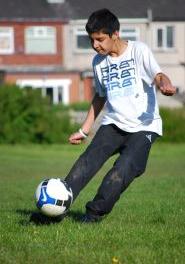A passion for sports and fitness can and should be instilled from the earliest of ages, yet primary schools undoubtedly have a tough challenge on their hands when they’re only granted a limited number of hours to commit to PE each week.
However no mistake should be made: the role of the primary school for lifelong fitness is today more important than ever.
One in 10 children was obese at the start primary school in England last year but one in five was obese by the end.
Today nearly a third of children aged 2 to 15 are overweight or obese and younger generations are becoming obese at earlier ages and staying obese for longer.
It’s no overstatement to say that the figures above are pretty terrifying, and as we look to the future for our children, we can’t as yet comprehend their life chances and the prevalence of obesity-related diseases if drastic action isn’t taken.
What’s more, beyond tackling obesity, establishing a love for fitness and a passion for sport has many other benefits, too.
This includes the management of student health and wellbeing, as well the improvement of educational attainment within the classroom, particularly with spelling and mathematics, regardless as to socioeconomic status.
So, how can teachers create a love for fitness amongst primary school pupils?
Create competition and nurture motivation
Creating long term goals to work towards can result in ongoing motivation and optimal performance during PE lessons.
This could take the form of team work – with a wall chart to keep track of how each team is progressing. If you’d rather avoid offering a single prize, you can encourage pupils to work towards milestones – which earn students prizes or classroom treats.
Here’s an extensive list of simple rewards that could encourage your pupils’ best physical efforts (it’s also worth noting that research has found that prizes motivate and improve the behaviour of usually disruptive pupils).
Introduce daily exercise to promote lifelong fitness
Bringing about significant improvements in your pupils’ fitness levels often demands a more frequent schedule than PE once or twice a week.
In recognition of this has been the ‘Daily Fitness Challenge’, with numerous primary schools committing to a one mile run each day. The programme, which has seen success throughout the UK, today has more than 2500 schools taking part.
Read more about the Daily Fitness Challenge.
Work fitness into every lesson
From mathematics to English and onto science and history, a little fitness can be worked into the most unsuspecting of lessons.
Head on over to Teach Hub for ideas that include everything from Hopscotch maths and spelling mats, to classroom fitness breaks.
What do you do to promote lifelong fitness in your school? Let us know in the comments below.










